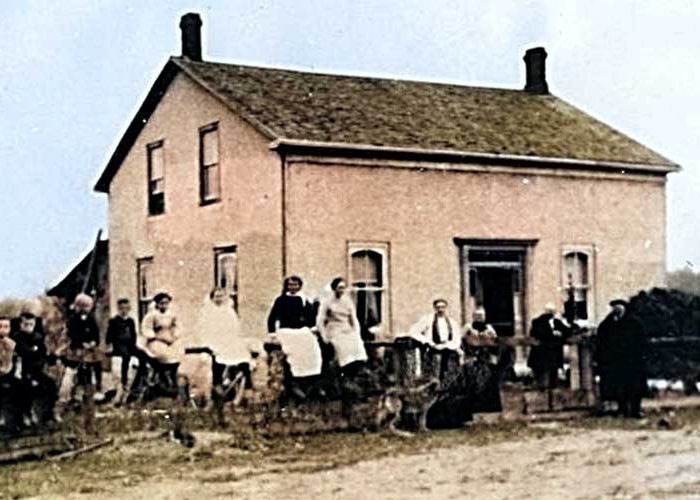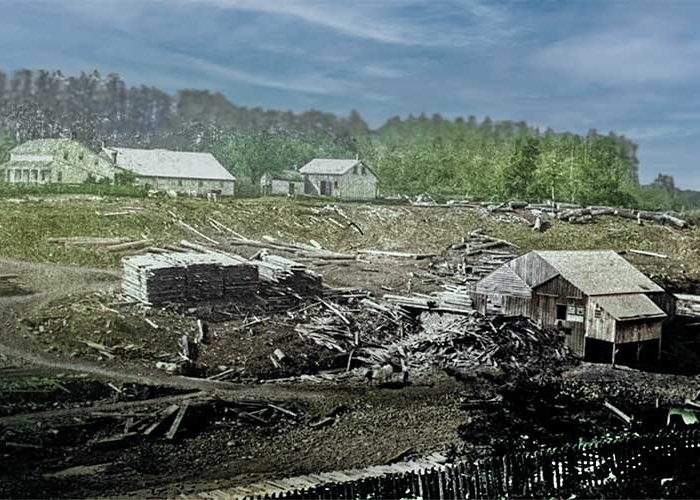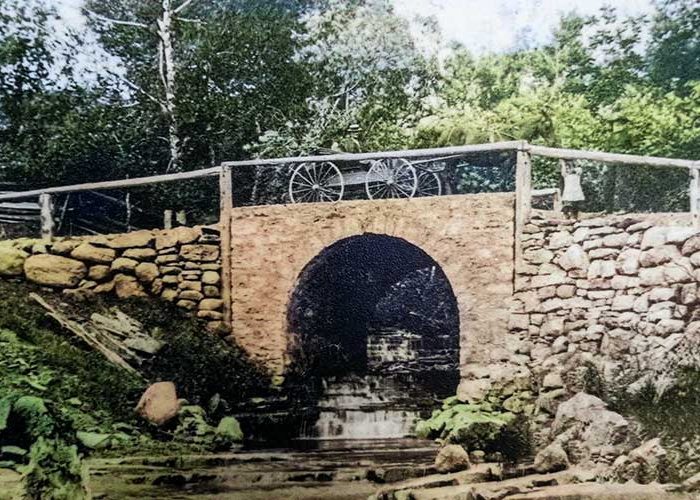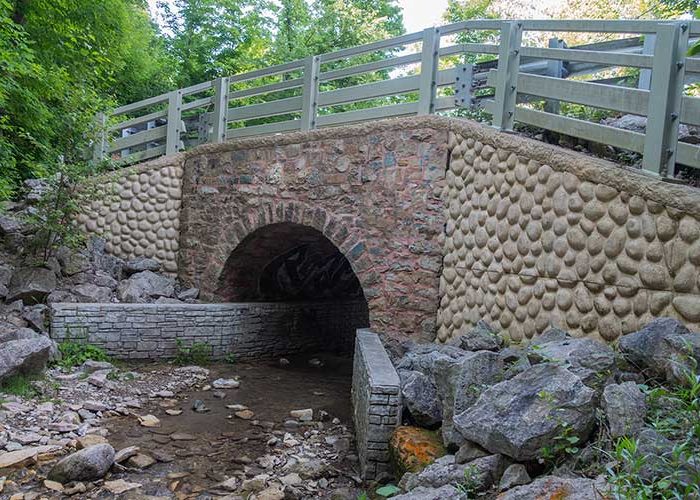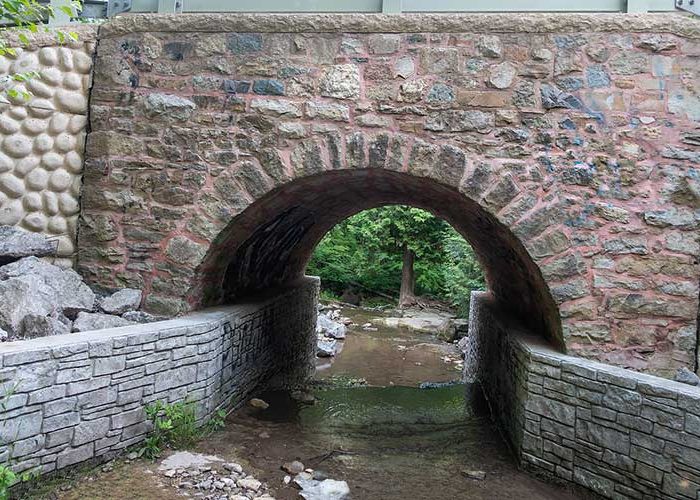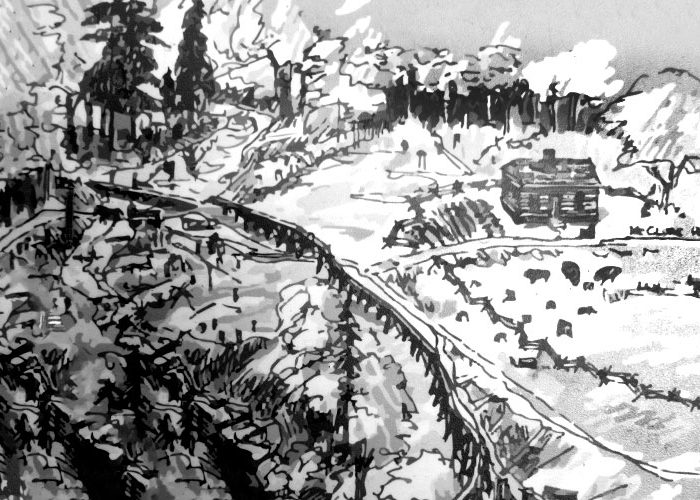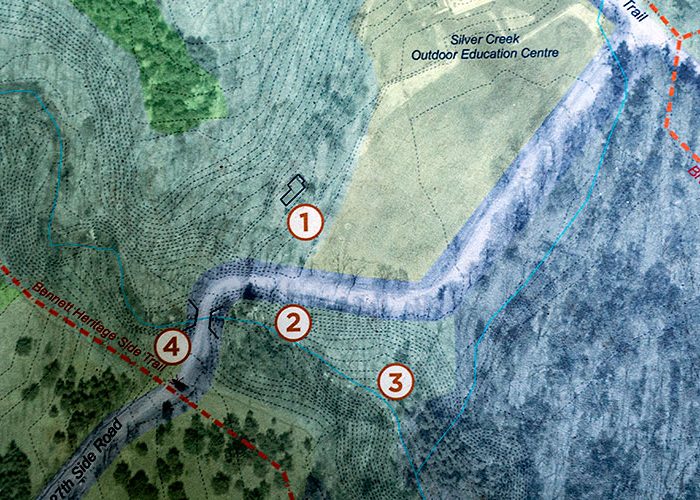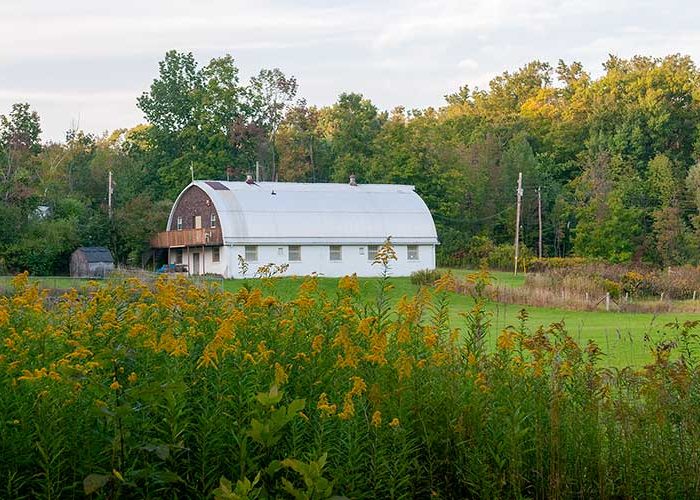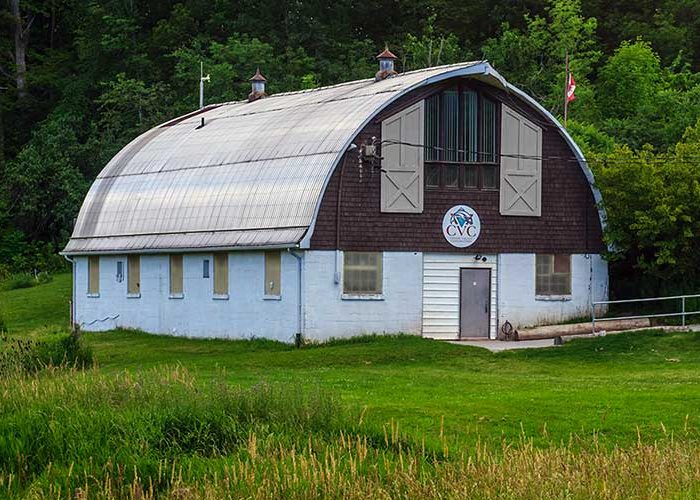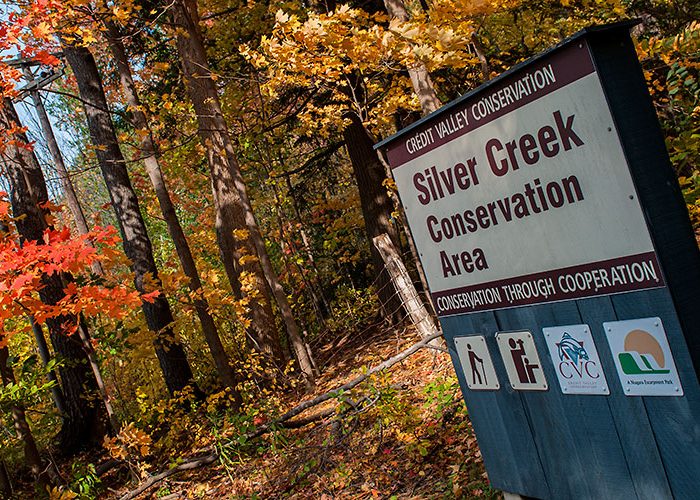The southern Ontario plain meets the Niagara escarpment where Silver Creek village was established. This spot accommodated a wagon road up the escarpment, steep though it was. A clear stream of water rushed down the hill.
The history of the place as a village begins about 1849.
The steep road at this spot slowed all traffic to a crawl so in 1850 John Graham opened a saw and gristmill with the creek as its power source. As wagons and riders waited their turn to ascend or descend the escarpment or waited for their products at the mill, Graham provided a tavern and a general store to meet their needs. Seemingly overnight, a village sprang up.
The planking of the road to the base of the hill by a joint-stock company prompted the construction of a tollbooth at the top of the hill. A further economic boost followed in 1852 with the announcement of the route for the Toronto-Guelph Railroad. The land prices on the escarpment soared as quarries were established to provide gravel while the soaring pines on the escarpment were culled for the firewood needed to stoke the boilers on the trains.
This frontier-style village attracted labourers, both the hard-working and criminal element.
Crime in the area soared as the Jones’ gang used nearby caves to hide stolen horses. Store robberies, burglaries and home invasions were reported. A counterfeiting operation and a murder in 1859, topped off the violence!
The opening of the Grand Trunk railroad through Limehouse added to the prosperity of the place.
Graham sold off village lots, sold his tavern to James Preston, his store to John Foreman, and the mill to George Murray and George Crawford. Thomas Carbrough had a distillery running to use the excellent waters of the Creek for refreshment, while John McFerran ran a blacksmith and wagon shop.
Once the boom subsided, a considerable village stood above, below and on the escarpment face.
Probably in the late 1850’s a Wesleyan Methodist congregation began meeting in the village and soon built a church at the bottom of the hill. By 1861, the township school for School Section #14 was moved to the village on Lot 26, on top of the escarpment. The village even had a post office by this time under the auspices of John Foreman.
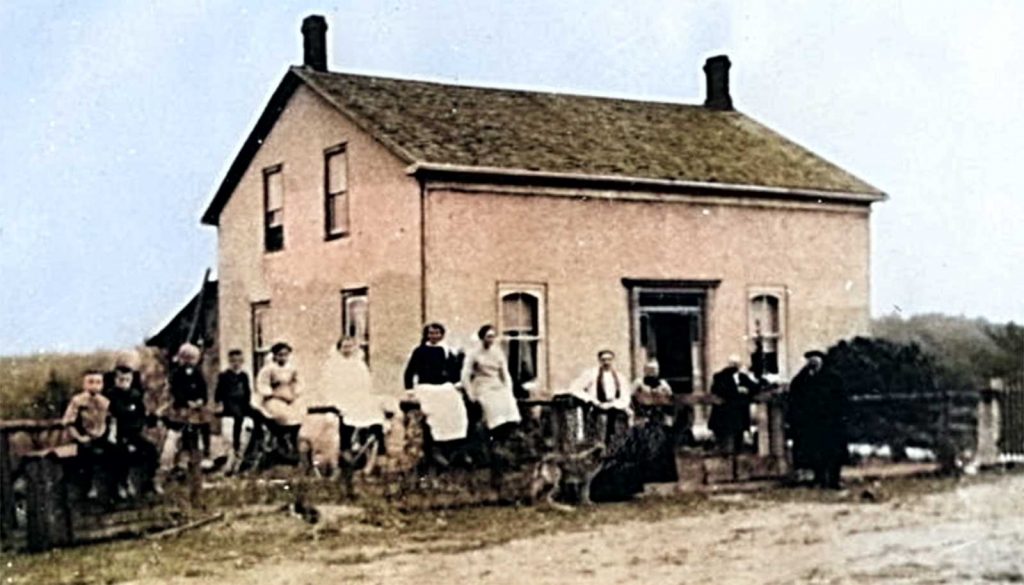
James Preston died in 1865, leaving the tavern in the capable hands of his wife.
Mrs. Preston carried on the taverns’ reputation for a blazing fire, home cooked meals and good ale.
Mrs. Preston lost her liquor license in 1876. She sold the place in 1879 to William Perryman. Perryman got the liquor license back, but the hotel suffered two fires that destroyed the place. The former Methodist Church was finally moved onto the site to serve as a hotel. Perryman continued to serve the area until the growing strength of the Temperance movement closed him down about 1887.
The tollbooth continued collecting money although the road had fallen into disrepair, inciting public indignation beginning in 1868. They moved the booth to 22 Sideroad in 1869, where it was promptly burned. They rebuilt it and continued to collect tolls until 1876, when Halton County took over the road. ln the 1870s the church was ministered through the Acton circuit, eventually closing by the end of the decade.
A brick schoolhouse was built in 1871 at Lot 29, Concession 7, to replace the Ballinafad school that had closed in 1869. ln the meantime, SS#16 was created at 22 Sideroad in 1856. Many Silver Creek students attended this stone school until it closed in 1963.
As the village houses needed repair they were tom down or removed.
The cold clean water that once tumed the mill waterwheel was inspiration for the construction of a 400,000-gallon reservoir for the Georgetown water works system in 1891. A ten-inch water main was laid down the centre of the 8th concession to supply Georgetown with fire hydrants and running water
The bend in the road was eliminated in 1916 when Trafalgar Road was straightened.
A new age in transportation dawned when the road was paved in 1924. Silver Creek service station built by A. C. Patterson, opened in 1932 at the top of the hill. lt was enlarged in 1936 and sold in 194 7 to C. McCluskey. The business carries on to this day. A general store was reopened up the road from the service station and operated until the 1970s.
The original houses of the Miller and Varey families at the base of the new road, were demolished in 1960 for road widening, leaving only a cluster of houses on the former bend in the road and at the 27 Sideroad.
ln the 1960s the village started to grow again as commuters built their homes at the top of the hill and clustered around the 27 sideroad, which became a cul-de-sac when the Highway 7 to Acton was rerouted. The quarries have continued just west of the village at the top of the escarpment to this day, currently owned by the Duff family, who once worked with the Graham fami ly to ensure the prosperity of the Village more than a century ago.
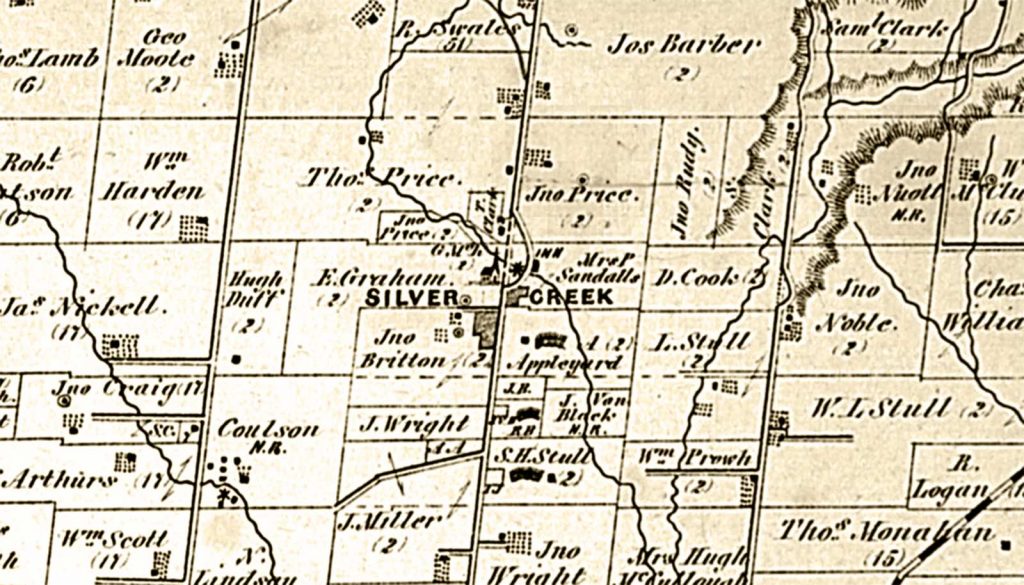
A great deal of the stone used to build the intemational bridge at Buffalo came from the quarries at Silver Creek in 1873.
The establishment of the Bruce Trail in 1967 brought hikers through the lovely vale where the walls of the Georgetown reservoir still stand and where the Silver Creek still splashes down the escarpment.
Old houses were replaced with modem ones.
The United Nations designated the Niagara Escarpment as a World Biosphere Reserve in 1990.
An archeological dig in 2000 revealed traces of the Miller house and the general store at the base of the hill.
The four lanes of Trafalgar Road cover the site today.
Today, Silver Creek is one of Ontario’s “lost hamlets”, now little more than a memory of times long gone.
WRITTEN BY: John Mark Benbow Rowe / Esquesing Historical Society

